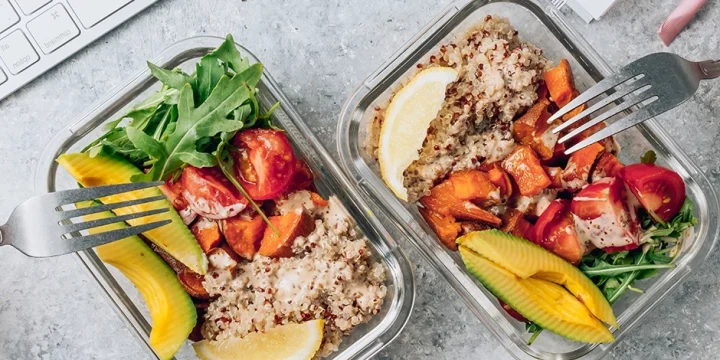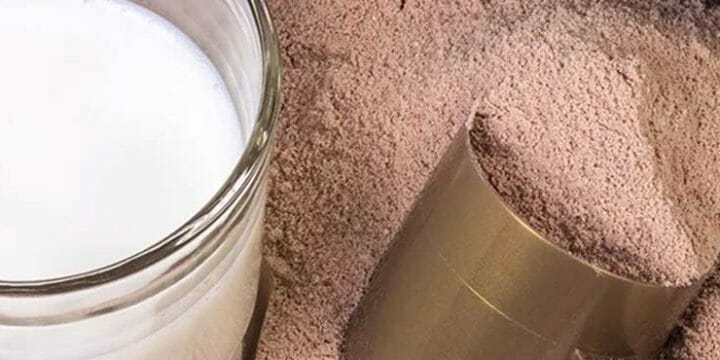Impressive vertical jumps create high impacts on sports like basketball, and soccer, among others. The power of high jumps lies in the power of the lower body. Is your vertical jump quite low at the moment?
Worry not, we are going to discuss five exercises that will give you the desired vertical jump, making you able to dunk like an NBA superstar. Furthermore, these routines have been tried put different athletes. Apart from improved vertical jumps, you will enhance your fitness level, stability, and speed.
I also advise my clients to combine it with high-quality pre-workout supplements for maximum benefits.
Let us dive into it how to improve your jump heights within a reasonable time.
Quick Summary
- To increase your vertical jump and power, consider stretching, plyometrics, squats, sprinting, and Bulgarian split squad exercise routines.
- These exercises improve muscle flexibility, speed, power, and lower body strength, all essential for higher jumps.
- A study in the British Journal of Sports Medicine found that plyometric training significantly improves vertical jump height by 5% to 10%
- In my view, incorporating these exercises, especially with a focus on form and technique, can dramatically improve athletic performance in sports requiring high jumps.
5 Exercises to Increase Vertical Jump
1. Stretching
In order for an athlete to reach peak performance, they
This requires having a regular routine of stretching that will keep your muscles loose, malleable, and less susceptible to injury.
In my experience as a personal trainer, I've seen clients struggle with muscle knots or “trigger points” in various parts of their bodies. These knots can restrict muscle tissue length, making the muscles prone to weakness and shortening.

Use a foam roller to relieve knotty muscles, as shown in the video. Roll it over spasms, pressing along the outer thigh to stretch muscle fibers.
Don't forget to massage and stretch calves, quads, and IT band. Proper form is crucial for effective use; the right starting position ensures maximum muscle elongation. This leads to improved strength and higher jumps.
Here are a few quick drills you can do with a foam roller:
- Calves: Put the roller under your calf and rest your other foot on the floor (or cross it over the top of your shin
for more pressure). Roll from your ankle to your knee. - IT Band: Lie on your side with the roller near your hip and rest your other foot on the floor. Move the roller along your outer thigh.
Add more pressure pressure by stacking your legs on top of one another. - Quads: Lie on your stomach with the roller placed under the front of your thigh. Roll up and down from the bottom of your hip to the top of your knee.
Most people have tight hip flexors from sitting a lot, limiting full hip extension and vertical jump potential.
The fix? Stretch your hip flexors for 30 seconds on each side, twice, then try jumping as high as you can, aiming higher each time.
You'll likely see a noticeable improvement in your jump height. Stretching not only strengthens but also boosts explosive power, as flexible hip flexors store more power, leading to higher jumps.

2. Plyometrics
Plyometrics focus on explosive movements for speed and power, like Olympic lifts or depth jumps. These exercises involve jumping and bounding, where muscles exert maximum effort in short bursts, as seen in depth jumps.
The aim is to quickly transition from the eccentric (jumping) to the concentric (landing) phase, using correct biomechanics and technique, demonstrated in the video. Plyometrics effectively enhance jump height.

In a study published in the British Journal of Sports Medicine, research scientist Goran Markovich states that, “The overall results of this study suggest that the [plyometric] significantly improves vertical jump height.” [1]
That improvement is measured while jumping with the arms overhead in a five percent to 10 percent increase (or
Plyometric training could well be recommended for healthy individuals aiming to improve not only their vertical jumping ability but also other athletic performance.
- Goran Markovich, Research Scientist
In my sessions, I've seen plyometrics initially boost slow-twitch fibers, then shift to enhancing fast-twitch fibers, crucial for better vertical jumps.
Patience is key, as these changes aren't instant. I suggest clients dial back leap practice after weeks to highlight fast-twitch gains.
Plyometrics, ideal for power training, demand caution for beginners due to knee strain. Strong ligaments and tendons are vital, so I pair them with strength routines. Athletes at any level can safely progress in plyometrics with the right guidance.
Here is a list of various drills you can try relative to your experience:
- Beginner: Lateral bounds or hops, bunny hops (with or without a kettlebell), power skips, jump roping, jumping jacks
- Intermediate: Standing broad jumps, squat jacks and jumps, low on-box jump, speed ladder (lateral and linear)
- Advanced:
Prone to box jump, knee tuck jump, depth drop, box drop crossover step, plyometric push-ups, plank walkouts, power cleans.
3. Squats
Squats, key for explosive jumping, vary to target quads or hamstrings. Done right, they enhance mobility, balance, and burn fat. But, incorrect form risks back and knee injuries.
According to the National Institute of Health (NIH), squats strengthen stabilizer muscles, ligaments, and tissues, preventing sports injuries by boosting flexibility and balance [2].
Useful for everyone, not just athletes, they're especially beneficial for jump-focused sports like basketball and volleyball. Key variations include back, box, and front squats.
A) Back Squats

B) Box Squats
C) Front Squats
Box squats are a great exercise that teaches athletes to explode upwards once they reach the box. This gives them the power they need when preparing to launch themselves when jumping.

4. Bulgarian Split Squat
Due to the high potential for injury by novice and experienced weight trainers alike when performing traditional back squat exercises with a dumbbell, many exercise professionals have begun to espouse the Bulgarian split squat,
“The back gets injured the most when squatting, so we train our legs for size and strength by bypassing the back.”
- Mike Boyle, Strength and Conditioning Expert

The Bulgarian split squat, shown in the video, is a challenging variation that shifts weight forward, increasing motion range and balance difficulty.
It primarily engages the front leg's quadriceps, assisted by glutes and inner thighs, with hamstrings and calves stabilizing – key muscles in explosive jumps.
A 2021 study by the NIH found it as effective as back squats but with less injury risk. Ideal for boosting lower body strength and vertical jump with reduced injury risk, the Bulgarian squat is an excellent workout addition [3].
5. Sprinting
In my experience training both elite sprinters and high jumpers, I've noticed they develop the same muscle groups. I often incorporate short, intense sprints in my clients' routines to activate multiple muscle groups, which enhances strength and performance.
These sprinting routines not only improve cardiovascular endurance but also fast-twitch fibers, crucial for explosive jumps.
I recommend including ladder sprints with increasing distances and hill sprints to vary terrain and inclines, helping to avoid muscle building plateaus and keep workouts challenging.

Finally, inject some form of downhill sprint
On the surface, downhill running may seem pretty simplistic. However, proper mechanics are crucial to downhill running so that you can avoid the common mistakes of braking on your heels and overstriding.
Downhill running includes eccentric muscle contractions, during which muscle fibers lengthen under tension, which can help increase muscle power and make you faster since eccentric contractions are our strongest type of contraction.
- Jason Karp, Physiologist
The increased power, speed, and agility gained from these sprinting exercises over time will also be instrumental in your journey to maximize your vertical jump.
Injury Prevention and Safety Tips
When training to improve your vertical jump, safety and injury prevention are paramount.
- Always start with a thorough warm-up, focusing on dynamic stretches to increase blood flow and prepare your muscles and joints.
- Incorporate core strengthening exercises to enhance stability and balance, reducing the risk of falls or missteps.
- When performing jumps, ensure proper landing technique by bending your knees to absorb impact, which helps prevent knee and ankle injuries.
- Gradually increase intensity and volume to avoid overtraining.
- Wear appropriate footwear providing adequate support and cushioning.
- Lastly, include rest days in your routine to allow for muscle recovery and repair.
FAQs
Is It Possible for Me To Get a 40 Inch Vertical?
Achieving a 40-inch vertical jump is possible with dedicated training focusing on strength, plyometrics, and proper nutrition. Consistency, along with tailored exercises to enhance power and explosiveness, is key to reaching this ambitious goal.
Will Jumping Everyday Increase Vertical?
Jumping daily can increase your vertical leap by strengthening leg muscles and improving explosive power, but rest and recovery are crucial to prevent overtraining and injury. Balance with strength training and proper technique for optimal results.
Do Strong Abs Help You Jump Higher?
Yes, strong abs contribute to higher jumps. They provide core stability and power, essential for the explosive upward movement in jumping, enhancing overall performance and height achieved during the jump.
References:
- https://bjsm.bmj.com/content/41/6/349
- https://pubmed.ncbi.nlm.nih.gov/15155427/
- https://www.ncbi.nlm.nih.gov/pmc/articles/PMC8136570/
About The Author
You May Also Like







These vertical jump exercises look solid. I’ve already added a few into my leg day routine—def feeling it in the glutes and calves.